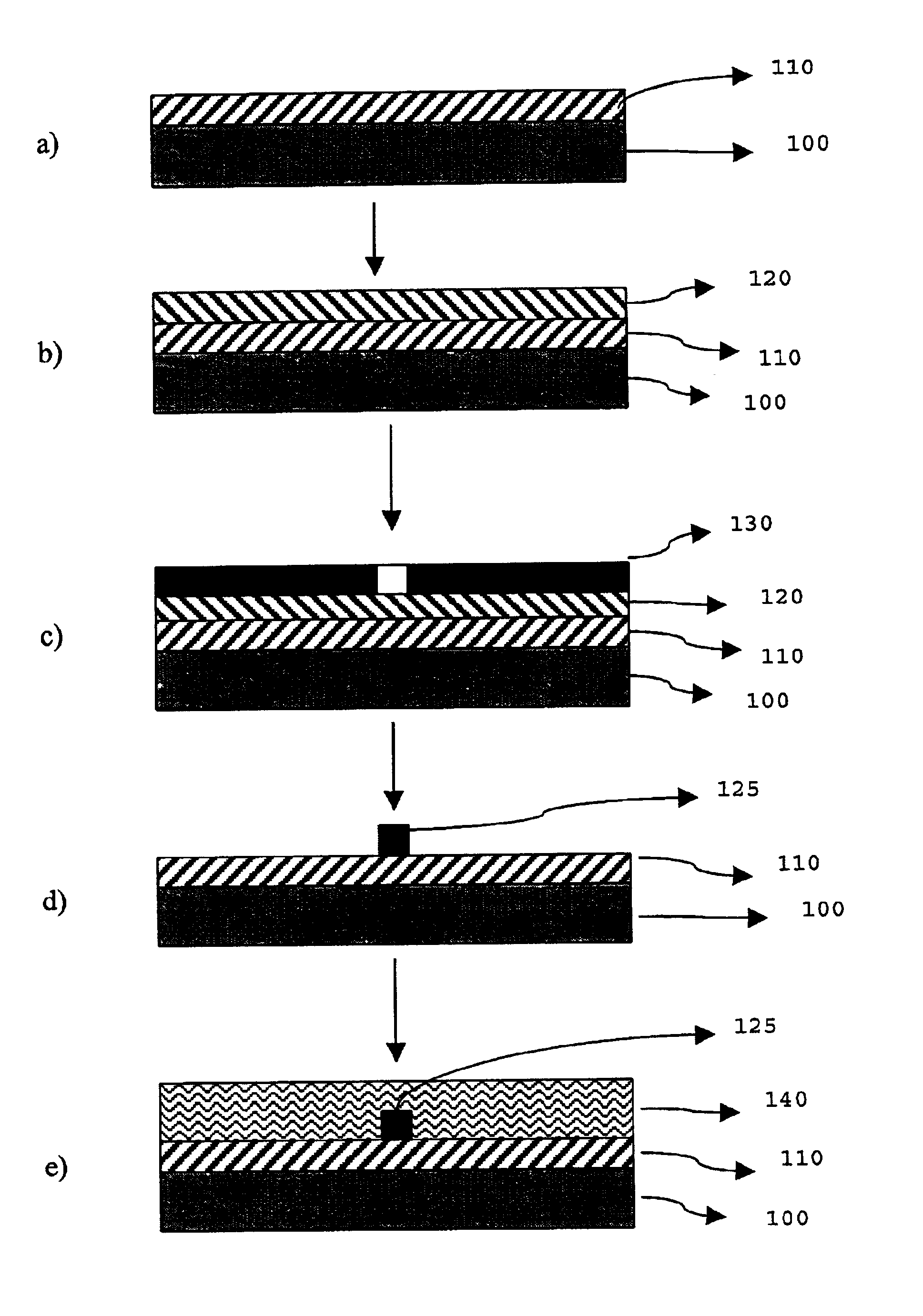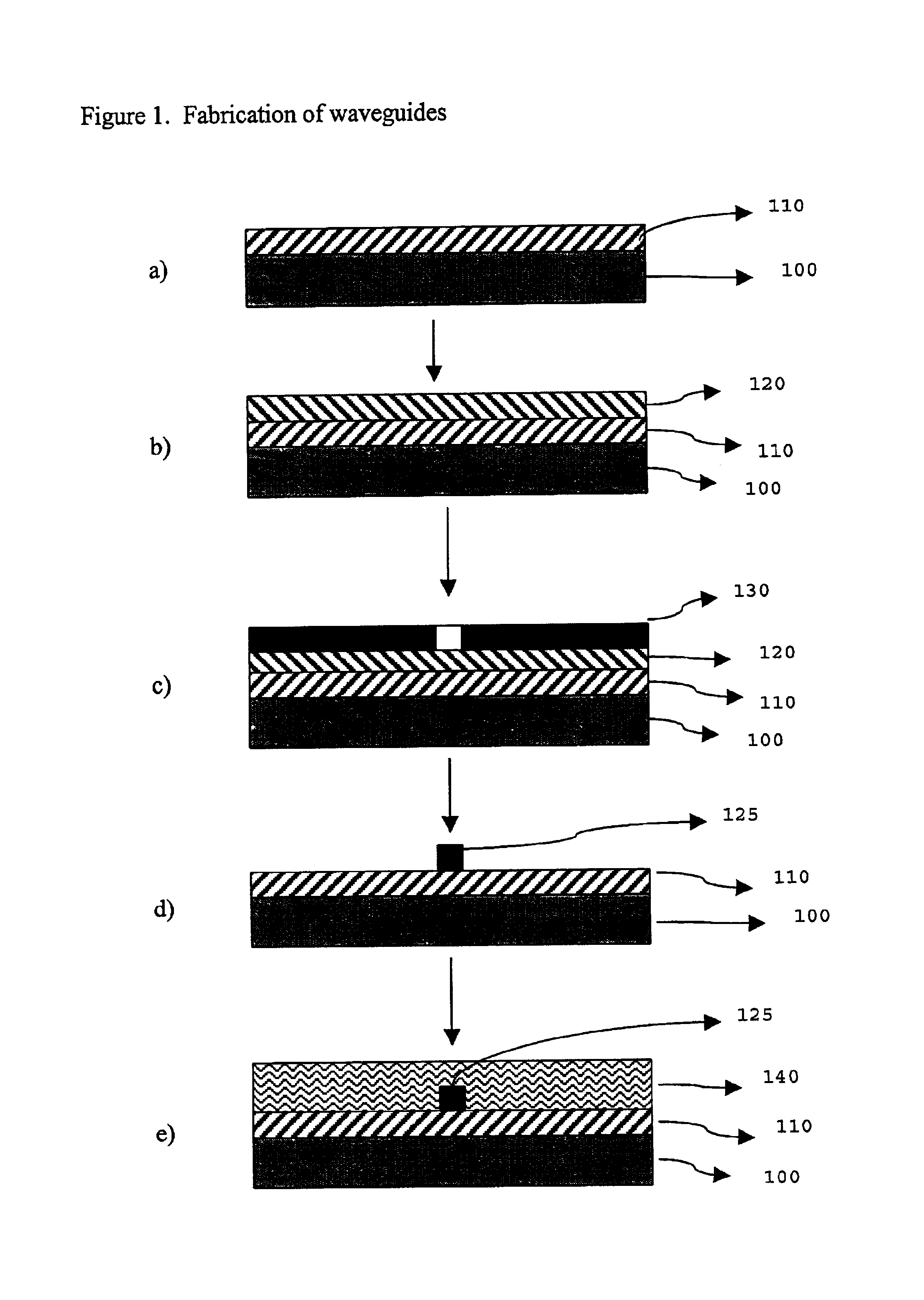Fluorinated photopolymer composition and waveguide device
- Summary
- Abstract
- Description
- Claims
- Application Information
AI Technical Summary
Benefits of technology
Problems solved by technology
Method used
Image
Examples
examples
[0059]The following non-limiting examples are given to illustrate the invention. Variations in composition of the photosensitive composition and the processes to fabricate a waveguide should be apparent to those skilled in the art and are within the scope of this invention.
example a
[0060]Shrinkage Measurement: A layer of liquid composition (about 10 m thick) is coated onto a silicon wafer. The thickness of the liquid (dL) is measured with a Filmetrics F20 thickness tester (available from Filmetrics, San Diego, Calif.). The liquid coating is exposed to 10 mJ / cm2 UV light using an 800W mercury xenon lamp. The thickness of the solid film (ds) obtained is measured again with the Filmetrics tester. The shrinkage (S) is calculated using the following equation:
S=1−ds / dL
example 1
[0061]To a 3-neck flask was added 1 equivalent of 1H, 2H, 3H, 3H-perfluorononane-1,2-diol, and anhydrous ether at 0.3-0.4 M. To the ether solution was added 2.2 equivalent of anhydrous diisopropylethylamine under argon. While stirring 2.2 equivalent of anhydrous acryloyl chloride was added dropwise. The mixture was stirred for 4 h at room temperature and then 0.4 equivalent of methanol was added to neutralize excess acryloyl chloride. The resulting mixture was filtered through Celite / silica to remove salt precipitate. The filtrate was concentrated to yield a clear liquid diacrylate with a molecular weight of 502.
PUM
| Property | Measurement | Unit |
|---|---|---|
| Nanoscale particle size | aaaaa | aaaaa |
| Viscosity | aaaaa | aaaaa |
| Molecular weight | aaaaa | aaaaa |
Abstract
Description
Claims
Application Information
 Login to View More
Login to View More - R&D
- Intellectual Property
- Life Sciences
- Materials
- Tech Scout
- Unparalleled Data Quality
- Higher Quality Content
- 60% Fewer Hallucinations
Browse by: Latest US Patents, China's latest patents, Technical Efficacy Thesaurus, Application Domain, Technology Topic, Popular Technical Reports.
© 2025 PatSnap. All rights reserved.Legal|Privacy policy|Modern Slavery Act Transparency Statement|Sitemap|About US| Contact US: help@patsnap.com



